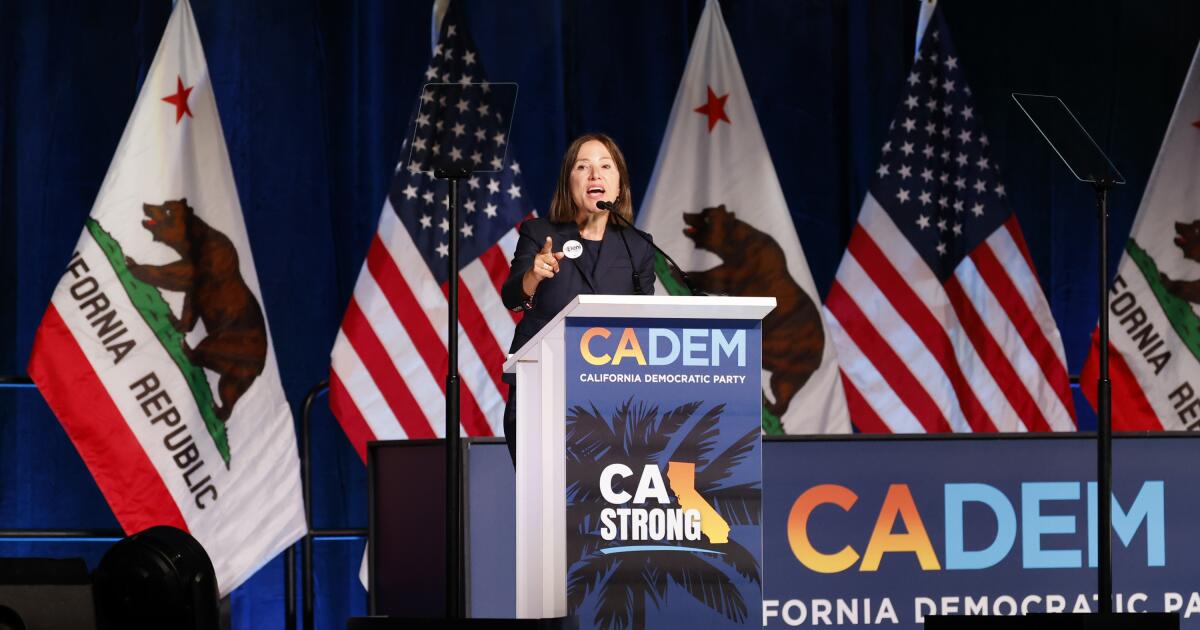Actions of two top state treasurer hopefuls raise questions
Reporting from Sacramento — The job of state treasurer today involves managing billions of dollars, overseeing complex borrowing and investment decisions and working to restore California’s reputation on Wall Street.
It follows that candidates face particular scrutiny over their own finances, and the two leading candidates have each provided plenty of fodder for the opposition.
Incumbent Treasurer Bill Lockyer, a Democrat, has spent campaign funds on a variety of items related loosely if at all to his reelection bid. His expenditures include $1.2 million to help his wife win election as a county supervisor in the Bay Area, $16,000 in babysitting bills and a weekend trip with his family to the resort at Disneyland.
His GOP challenger, state Sen. Mimi Walters of Laguna Niguel, has voted on numerous bills that could affect her husband’s business interests. David Walters is the president and largest shareholder of a medical services firm whose subsidiary was paid more than $34 million in the last four fiscal years by the state’s prison system.
The subsidiary, Drug Consultants Inc., provides nurses, pharmacists and other healthcare workers for California’s overcrowded prisons. Federal courts seized control of prison healthcare several years ago because judges said unwarranted inmate deaths were civil rights violations. Outside firms such as Walters’ have been hired to provide medical staff until the corrections department can ramp up its own operations.
Mimi Walters declined to speak with The Times but said in a radio appearance this month that “whenever there has been any sort of slightest conflict, I’ve always recused myself.” Her campaign strategist, Dave Gilliard, said Walters has consulted with legislative lawyers about what bills she should abstain from voting on and has followed their advice.
Gilliard could not identify any bills on which Walters abstained because of a conflict.
This year, she voted against an $811-million cut in the prison healthcare budget, the largest cutback in a package of spending reductions that lawmakers approved through AB2 x8. Gilliard said Walters’ vote reflected her concern that reducing prison spending would result in a court-ordered early release of criminals.
As an assemblywoman and then as a state senator, Walters has also voted against legislation requiring more disclosure of state contracts (AB 2603 in 2008 and AB 983 in 2007) and against giving contract bid preferences to small businesses and those that hire California workers (SB 1108 and SB 967 in 2010). None of the bills became law.
“She’s a pro-business, conservative Republican,” Gilliard said, adding that the legislation would have imposed more costly regulations on state businesses. “You’re going to see very consistently: Anything that increases the cost of doing business in the state, she votes against.”
The chairman of the Senate Public Safety Committee, Democrat Mark Leno of San Francisco, said that even if legislative attorneys said Walters did not violate state ethics laws, “it’s just hypocritical for someone who is so outspokenly opposed to government to have her family at the public trough.”
Her tough-on-crime stances, he said, “would only benefit her husband’s business: more prisoners, more potential contracts.”
If elected treasurer, Walters, who chairs the Senate Ethics Committee, would face other financial entanglements. Her husband also owns a boutique investment bank, Monarch Bay Associates, and financial disclosure forms show that her holdings include between $100,000 and $1 million in Goldman Sachs, the powerful and controversial Wall Street firm that has business with the state treasurer’s office.
Gilliard said Walters would consult with attorneys in the treasurer’s office to avoid conflicts.
The treasurer is California’s chief banker, serving on the board of the state’s two giant pension funds and managing billions in taxpayer assets. The treasurer also oversees the state’s debt and finances public works projects.
Lockyer cites among his accomplishments a campaign to get Wall Street rating agencies to abandon practices that cost state taxpayers millions in extra interest payments, opening California’s bond market to small investors and maximizing public works spending to create jobs.
He has shown little fear that Walters or any other candidate will muster enough support to overcome Democrats’ double-digit voter registration advantage in California. As of mid-October, Walters’ campaign treasury was more than $14,000 in debt; Lockyer was sitting atop nearly $5 million.
That cushion has allowed him to spend on other things, such as the effort to elect his wife, Nadia Lockyer, to the Alameda County Board of Supervisors. “I think Nadia Lockyer is particularly qualified to be a county supervisor and will do an excellent job,” he said.
With both parents on the campaign trail, Lockyer has also used his campaign funds to pay for at least $16,000 in babysitting services, according to the campaign’s filings with the state. Although campaign funds can be used only for governmental or political purposes, the state’s ethics watchdog agency has advised candidates in the past that babysitting can qualify under limited circumstances.
In 2009, Lockyer spent the weekend after Thanksgiving at the Disneyland Resort in Anaheim with his wife and son. He billed the campaign $884.28, citing a meeting with Frank Barbaro, the chairman of the Orange County Democratic Party.
Lockyer said he wanted to stay in a hotel “in the heart of Orange County” and did not recall if he and his family went to Disneyland that weekend. The campaign was billed only for the hotel stay, he said. The following winter, Lockyer used campaign money to buy wedding and holiday gifts for his staff and spent more than $17,000 on two holiday parties.
Lockyer defended the spending: “I am not personally benefiting from my campaign expenditures.”
Gillard, the Walters strategist, said such spending “shows an attitude of entitlement” common among veteran politicians. “It only gets worse the longer they are there,” he said.
Walters has vowed to bring a limited-government approach to the job if elected: pulling back on borrowing she says the state cannot afford, curbing government spending and using the position to argue for lower taxes.
Walters’ lone TV ad pillories Lockyer’s decades-long tenure in office; he is a former state attorney general, assemblyman and leader of the state Senate. “After 37 years in Sacramento … Bill Lockyer is the problem,” the ad says.
Lockyer accused Walters of masking her own role as a legislator in the state’s recent fiscal meltdown. On the June primary ballot, she identified herself as a “businesswoman/senator.” This fall, she has dropped “senator” from her ballot designation.
Lockyer called it “hypocrisy” that she “hides that she’s an elected official.”
Also running for the post are Charles Crittenden of the Green Party, Robert Lauten of the American Independent Party, Debra Reiger of the Peace and Freedom Party and Edward Teyssier of the Libertarian Party.


